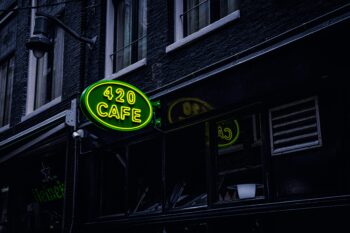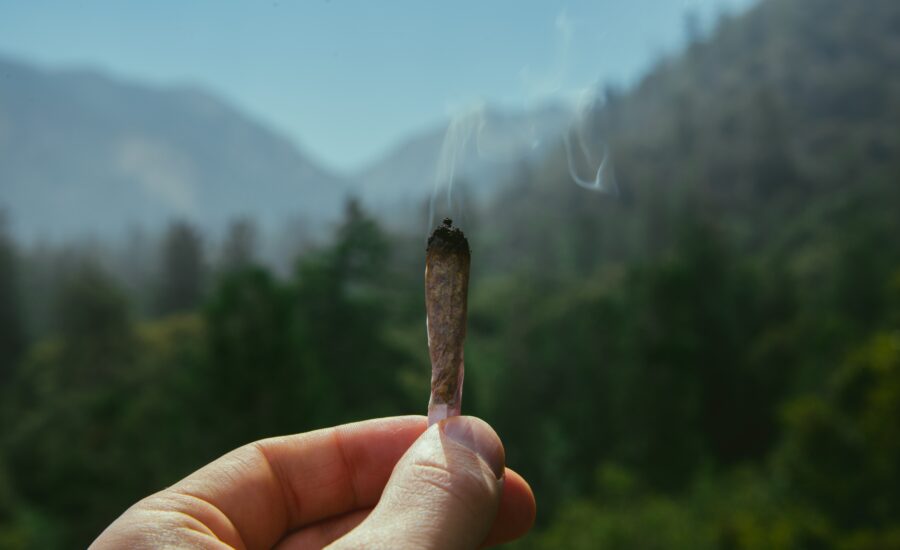Cannabis users have more options than ever before for where, when, what, and how to consume. Cannabis usage is more popular and socially acceptable than ever before, but why does public consumption of cannabis still seem so far away?
The “Gray Area” of Public Cannabis Consumption Legality
Despite being illegal almost everywhere in the country, there are plenty of examples of public use of cannabis in the United States. Dozens of public 4/20 celebrations take place in large cities across the country every year. In 2022, an estimated 50,000 people attended the “Mile High 4/20 Festival” that took place in Denver’s Civic Center Park. There were numerous warnings from the official City and County of Denver social media pages reminding attendees that public consumption of marijuana is a ticketable offense. Despite the warnings and an increased police presence at the event, zero cannabis-related citations were issued. This isn’t because people weren’t consuming cannabis (they were, en masse), but rather because it wasn’t worth the time or resources for the Denver Police Department to enforce the law appropriately. This begs the question: if public cannabis consumption is “allowed” under certain circumstances, why isn’t it legally allowed all of the time? This sort of gray area when it comes to law enforcement is much less common with tobacco and alcohol consumption. What makes cannabis any different?

Most cannabis users understand the risks of consuming cannabis in public areas. They know that their options for where to indulge are limited and that lighting up a joint while walking down the street is generally frowned upon – and also illegal in most circumstances. But why are legislators and regulators hesitant to treat cannabis similarly to alcohol or tobacco when it comes to consuming in front of others? Is it the belief that increased prevalence of cannabis usage will lead to negative consequences, such as lower property values or an increased crime rate? Are these beliefs justified, or are they remnants of the reefer-madness era? Is it simply because of the pungent smell? Unfortunately, there’s no definitive answer to these questions. By examining some of the most recent legislation and rulemaking regarding cannabis consumption, we can begin to get an idea of why it’s regulated in such a unique manner, and perhaps gain some insight into how consumption will be treated going forward as the cannabis sector continues to grow.
Cannabis Consumption Lounges
Perhaps unsurprisingly, the biggest factor in why cannabis is treated differently is because cannabis consumption is still a criminal offense according to the federal government, unlike alcohol or tobacco consumption. Even though there are a few examples of legally permitted public cannabis consumption on a state level, such as in New York, where individuals over 21 are allowed to smoke or vape cannabis in any area where smoking tobacco is allowed (with a few exceptions), or in California where cannabis consumption is permitted during certain public events, most cannabis-legal states aren’t interested in enacting this type of legislation quite yet.
 However, certain states with more mature recreational cannabis industries, such as Nevada, California, Illinois, Michigan, and Colorado, have enacted legislation allowing for cannabis consumption lounges and clubs. There’s a lot of variation in the laws from state to state for these lounges; what works for some states won’t work for others. Some states, such as Nevada, regulate consumption lounges at the state level, whereas others, such as Illinois, don’t award state licenses for consumption lounges and instead defer to local municipalities for regulatory oversight. Some lounge operators in the past have even depended on loopholes or gray areas within state regulations in order to operate. The decentralized nature of the US cannabis industry makes it nearly impossible for two states to have the same regulatory structure, and consumption lounges are no exception.
However, certain states with more mature recreational cannabis industries, such as Nevada, California, Illinois, Michigan, and Colorado, have enacted legislation allowing for cannabis consumption lounges and clubs. There’s a lot of variation in the laws from state to state for these lounges; what works for some states won’t work for others. Some states, such as Nevada, regulate consumption lounges at the state level, whereas others, such as Illinois, don’t award state licenses for consumption lounges and instead defer to local municipalities for regulatory oversight. Some lounge operators in the past have even depended on loopholes or gray areas within state regulations in order to operate. The decentralized nature of the US cannabis industry makes it nearly impossible for two states to have the same regulatory structure, and consumption lounges are no exception.
Despite this, one regulatory similarity has remained in all states with legal cannabis consumption lounges: these establishments are generally subject to stringent requirements regarding public visibility and odor mitigation. Across the board, the priorities for legislators drafting these laws are privacy and discreteness. Considering the socio-political history of cannabis prohibition in the United States, this isn’t a huge surprise. There are still quite a few people out there, even in the most cannabis-friendly states, that are made uncomfortable when they smell cannabis or when they see someone consuming it. It makes sense that legislators want to represent the interests of this part of their constituency. Nonetheless, the increase in consumption lounges is a clear signifier that cannabis consumption is becoming more culturally acceptable – and perhaps more importantly, a new aspect of the industry that a state can financially capitalize on.
The Future of Public Cannabis Consumption
So, should we expect cannabis consumption lounges to start exploding across recreationally legal states? Are these lounges just the beginning, or are they as far as public cannabis consumption is going to go? Will there ever come a time when consumers can legally walk down a public street with a lit joint, or light up in a movie theater while they chow down on popcorn?
Probably not. At least, not for a while. If history is any indication, we will see very slow progress trending in that direction in certain states, but it is highly unlikely that public cannabis consumption will ever be regulated in the same way as public consumption of alcohol or tobacco. Nevada is an interesting test case that could end up being indicative of how other states will choose to deal with enacting and regulating cannabis consumption lounges. In 2022, Nevada passed what are arguably the most extensive consumption lounge regulations that the country has seen yet, and subsequently awarded 40 prospective consumption lounge licenses, the majority of which are located within Las Vegas and the surrounding suburbs. These lounges are expected to become operational sometime later this year. Though Nevada has a uniquely hedonistic tourism culture that most other states can not relate to, it will still be very intriguing to see how successful these consumption lounges end up being. If they prove to be financially lucrative and don’t cause much trouble for the state’s regulatory authority in terms of enforcement, it is likely that other states will follow suit sooner rather than later, but that’s a big “if”. Until then, cannabis users will just have to take what they can get.
